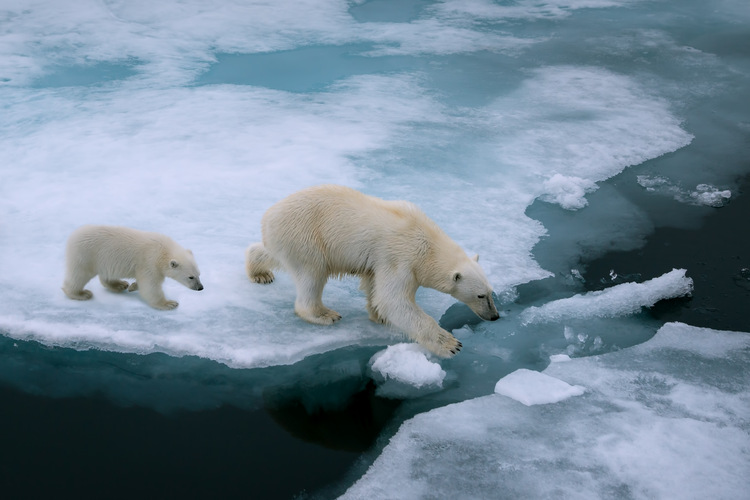
A new study reveals that if Arctic summers continue to get longer then most polar bears will probably starve
By
With a big male weighing up to 800kg and being up to 2.5 metres long, there is no more formidable terrestrial predator than the polar bear. The Arctic’s apex predator, this immensely powerful animal, loves eating nothing more than a blubbery, fat-rich lunch of seal. But, in order to catch its dinner, it needs sea ice from which to launch its attack. In summer, when the Arctic sea ice extent decreases, polar bears either turn to a more omnivorous diet that includes more terrestrial creatures, or they go into sloth mode and spend long periods of time resting and conserving precious energy until summer ends and the sea ice – along with the seals – returns.
But, with climate change bringing longer, warmer summers to the Arctic, polar bears are having to survive longer periods without easy access to sea ice and the fat-rich seals they are so reliant on. And while their natural lifestyle of binge eating on seals when the times are good (the bears can put on a kilo of weight a day at such times, and this fat layer normally sees them through the lean times) and living off accumulated body fat when times are hard means that they’re designed to survive a boom-and-bust lifestyle, the increasingly long, ice-free summers are pushing the resilience of bears to the extreme with more time stuck on ice-free land leading to a greater risk of starvation.
It has been speculated that polar bears who act more like brown bears and move towards a much more terrestrial diet would be better able to survive longer, ice-free summers. However, a new study, published in the journal Nature Communications, throws icy water onto this assumption. The study followed 20 polar bears in the Canadian Arctic over a three-week summer period and discovered that the bears who devoted their time to searching for terrestrial food lost weight at the same rate as the bears who spent most of their time resting. And with all the bears – whether they searched for food or just rested – losing an average of 1kg of body weight per day the report authors believe that neither strategy will allow polar bears to exist on land beyond a certain amount of time.
Despite being such large and charismatic animals, little is known about polar bear energy expenditure and behaviour when confined to land, so the researchers involved in the study used collars with video cameras and GPS to track the bears. This enabled them to get an idea of what the bears ate and did during the extended time on land. The researchers also weighed the bears before and after the observation period and measured their energy expenditures.
Many of the adult male polar bears simply lay down to conserve energy, burning calories at rates similar to hibernation. Others, actively searched for food, consuming bird and caribou carcasses and berries, kelp and grasses. But, while the terrestrial foods did give them some energetic benefits, ultimately, the bears had to spend more energy to access those resources.
Lead author of the study, Anthony Pagano, a research wildlife biologist with the US Geological Survey Polar Bear Research Program and former WSU post-doctoral researcher, said: ‘As polar bears are forced on land earlier, it cuts into the period that they normally acquire the majority of the energy they need to survive. With increased land use, the expectation is that we’ll likely see increases in starvation, particularly with adolescents and females with cubs.’
Related articles:




